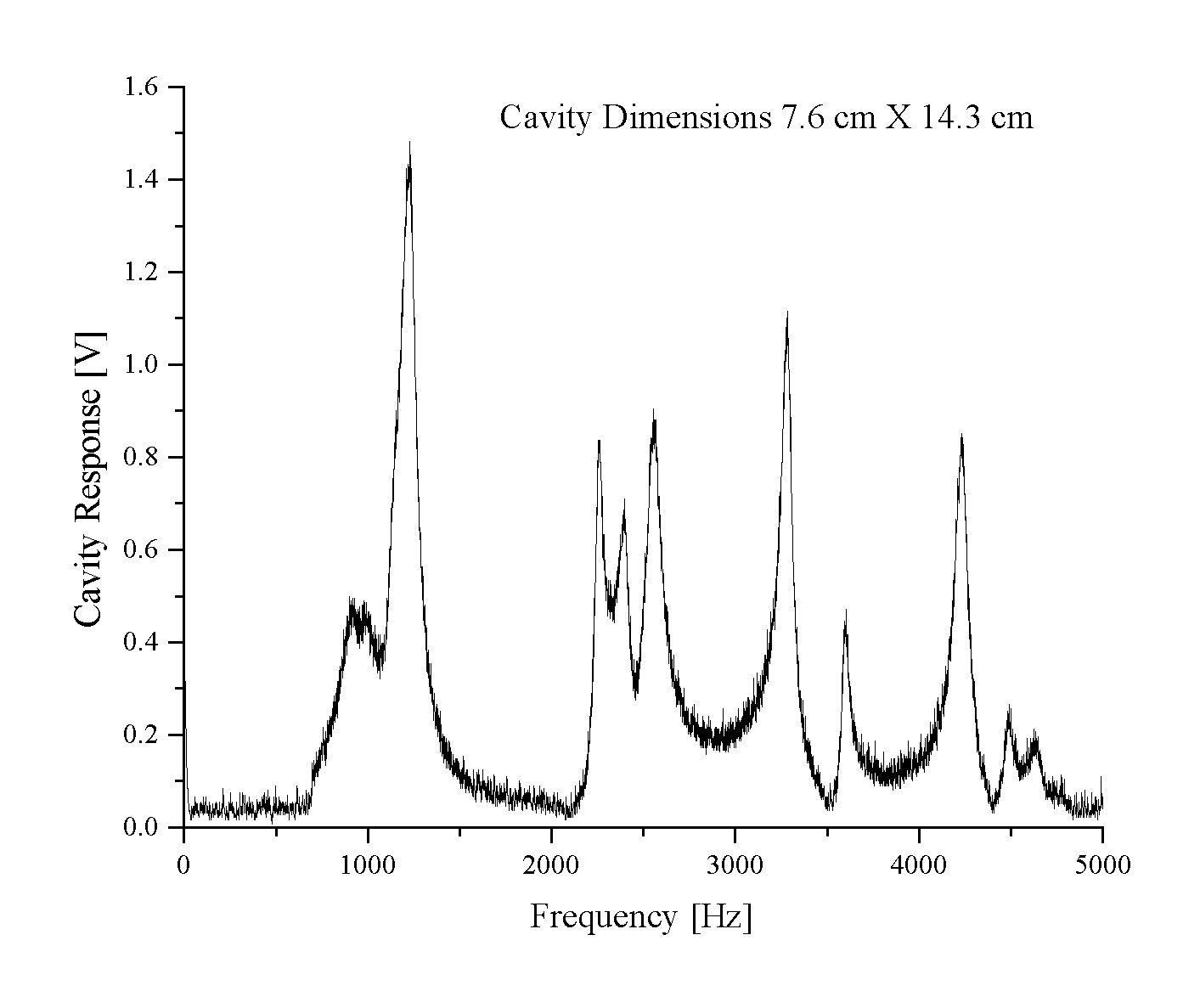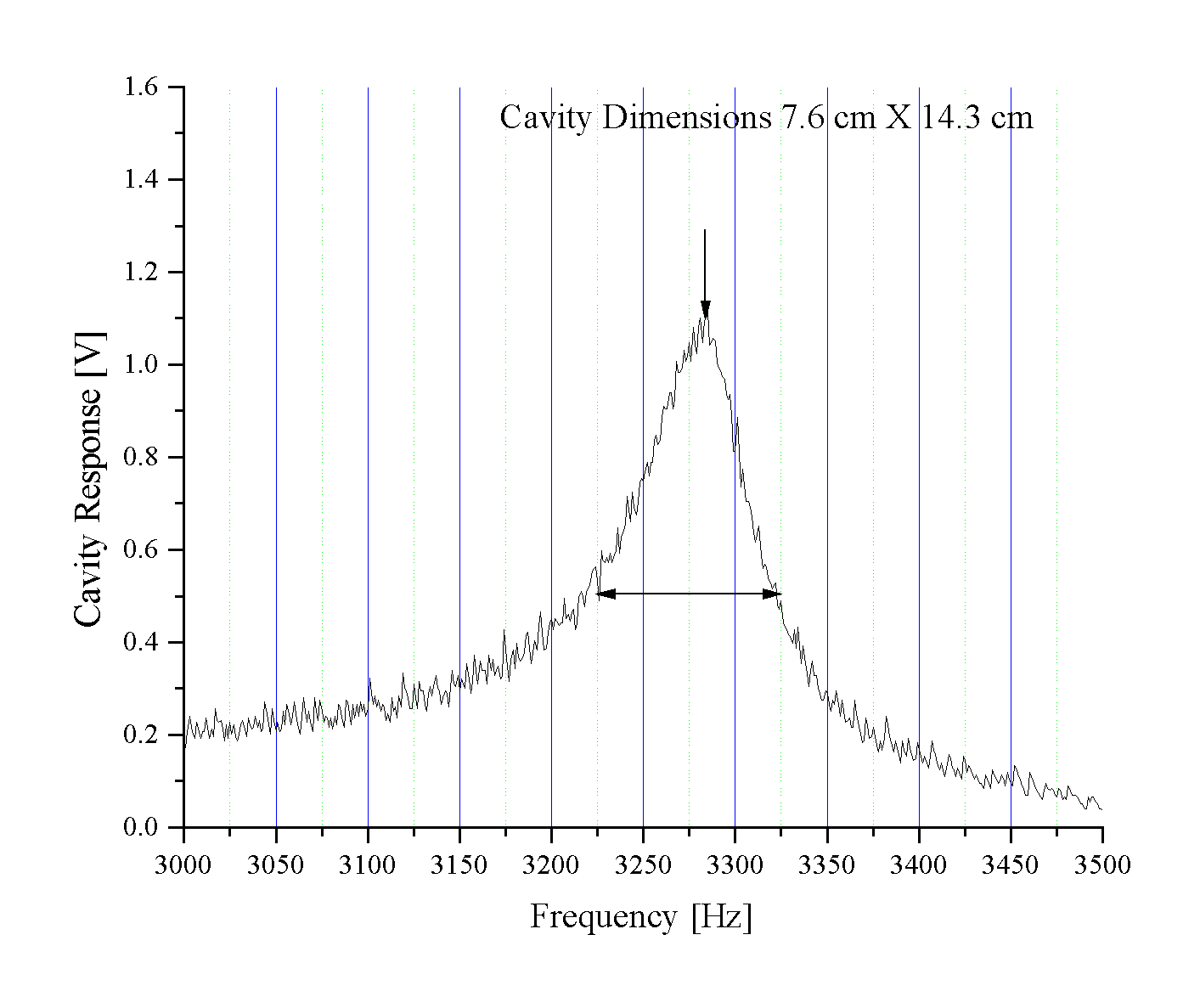
7.2 Critical Bandwidths and Just-Noticeable Differences
Hearing perception is determined, predominately, by two main parameters, the Critical Bandwidth (CB) and the Just-Noticeable Difference (JND).
As discussed in the last section, when a pure tone reaches the Basilar Membrane, the region of the membrane tuned to this frequency responds and activates the nerves at that point. However, more than one point on the membrane responds, and this range is called the Critical Bandwidth. In other words, if a tone of 1000 Hz is heard, the area on the membrane tuned to 1000 Hz responds, but, in addition, the part of the membrane tuned to 950 Hz might respond, as well, as shown in the last figure of the last section.
The Critical Bandwidth is rather large and is about 19% of the center frequency. So, at 1000 Hz, the CB is 190 Hz. Or, the entire part of the membrane tuned to the range of 905 Hz to 1095 Hz will respond. The interval from one end of the response to the other corresponds to about three half-steps (1.05953 = 1.19) or about a minor third.
At 500 Hz, the CB = 95 Hz. Below 500 Hz, the ear is not so good and the CB is always about 90 Hz.
Notice that none of these values are precise. Most of the response of the Basilar Membrane occurs right at the input frequency, while there is still some response quite a bit farther out than the CB, but the CB still gives the basic range of the membrane that responds to a particular frequency.
Detecting pitch:
Pitch information is obtained primarily from the place on the Basilar membrane that resonates with an input tone. However, some information can be obtained from how often the neurons fire. The neurons fire at the peak of the vibration. They cannot fire fast enough to fire at every peak in the wave. But, when they do fire, it is at the peak. So, it is not quite as simple as saying that the neurons fire at the same frequency of the input tone, by they do fire in phase with the input.
Between these two mechanisms, the ability of the ear to identify the exact frequency of an input tone is called the Just-Noticeable Difference. Another way to state this is: how much must a frequency change for the ear to notice the change in frequency? It turns out that for the ear, the JND is about 0.5% or 0.005. This is about 1/12 of a half step!
For example, at 1000 Hz, the JND is 5 Hz. So, if two tones are played separately at 1000 Hz and 1002 Hz, you would not be able to tell that the pitch has changed. However, if the tones are 1000 Hz and 1010 Hz, you should be able to tell the difference.
Relationship between the CB and JND:
Notice that the CB is much greater than the JND. This is true in general and you can understand why from the labs on rectangular cavities.
Remember what the spectrum of the cavity looked like:

Letís enlarge the x-axis around on individual peak:

There is a peak at around 3280 Hz. How well can we judge this? The frequency of this peak is certainly greater that 3275 Hz, but it is less than half way from 3275 and 3300, so it must be less than 3282.5 Hz. So, the frequency is 3280 to within about 5 Hz. This would give a JND of about 0.2%. This is a little better than the ear can do, but we are using a powerful computer to help us!
However, notice how there is a range of frequencies that respond, from about 3225 Hz to 3325 Hz. This is about 100 Hz, and this would correspond to the Critical Bandwidth. In this case the CB is 3%. Again, this is much less than for the ear, but it is a very different situation.
Actually, the most interesting parameter is the ratio of the JND to the CB. If a peak is very broad, it will be much harder to judge the position of the center. So a larger CB will lead to a larger JND. For our example above, the CB = 3% and the JND = 0.2%, so the ratio of the JND to the CB ratio is 1/15. In other words, we could tell the center frequency with an accuracy of 1/15 of the width of the peak. However does the ear do? In this case, the CB = 19% and the JND = 0.5%, so the ratio is now 1/38. So, given a certain width, the ear is actually very good at determining the center frequency!